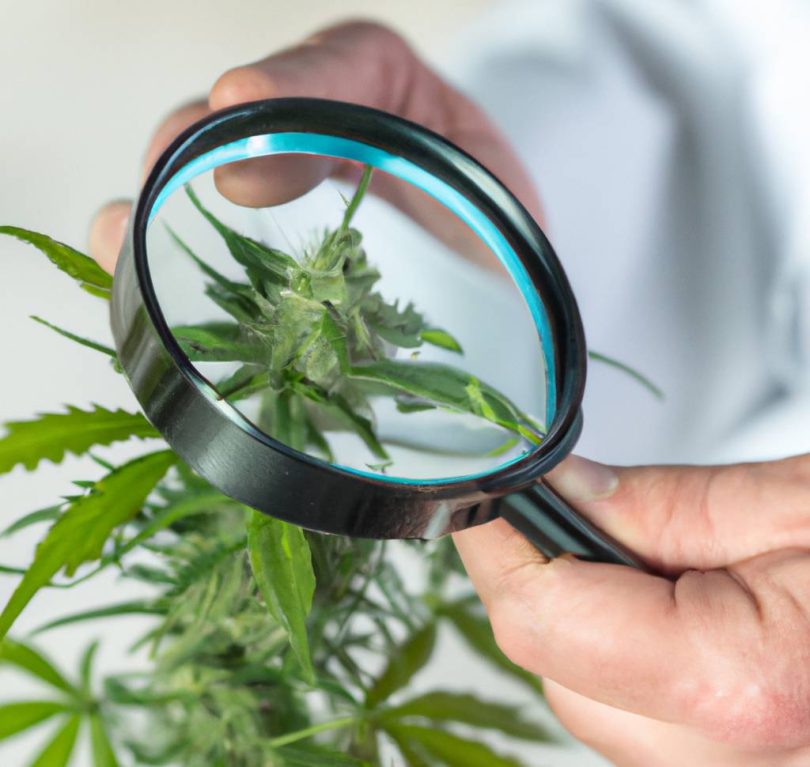CBDA is CBD before heat is applied. In other and longer words, CBDA (Cannabidiolic acid) is the acidic precursor of CBD in the cannabis and hemp plants – and this makes it the form of CBD that exists predominantly in the natural world.[1]. What it means is that the plants actually produce CBDA, and when heat is applied it can be turned into CBD (a process called decarboxylation).
As cannabis legalization spreads, more data is being gathered about the benefits of various cannabinoids thanks to increased research that was previously impossible to conduct. CBD has been linked to a variety of physical and mental conditions, including epilepsy, sleep disorders, Tourette’s syndrome, inflammation, and more.[2] But what about CBDA? What are the benefits of the naturally occurring form of CBD?
Neurological Benefits
The neurological potential of CBDA includes some of the most cutting-edge benefits researched in the cannabis-related medical field today. One of the first recognized uses for CBD is as an anti-seizure medication.[3] In fact, the only FDA approved cannabis-based drug is an epilepsy drug called Epidiolex which is actually a CBD isolate [4], and many patients who suffer from epilepsy all over the world report that the drug allows them to live a near seizure free life. Additionally, CBDA has been linked to 5-HT1A serotonin receptors, one of the primary sources for happiness in the brain.[5] While the data is sparse, there is evidence that it may help to serve as a mood elevator. All of this, while being non-intoxicating, may mean that CBDA can help multiple neurological conditions without impairing any day to day functions through inebriation.
Physical Benefits
While the neurological benefits may provide some of the biggest impacts, the physical effects may actually help a larger group of people, as the issues they address tend to be more common. Early studies in rats have found that CBDA is effective in fighting against nausea, and may provide a natural alternative to many over the counter products that dominate the market today.[6] Additionally, evidence suggests that CBDA may be used as an anti-inflammatory, also shaking up the over the counter pain relieving industry.[7] And possibly one of CBDA’s most significant benefits has to do with its antibacterial properties. The subject was researched in Czechoslovakia as early as the 1960s, and patients were treated with CBDA with reportedly great success. By the way, one of the junior researchers at that time was Prof. Lumir Hanus, who later, in Israel in the 1990s, was a key part in the discovery of the endocannabinoid system, as part of a small team led by Prof. Raphael Meschoulam.
note: Many patients that suffer from IBD, Crohn’s disease, and Colitis find that consuming fresh cannabis buds, alongside sublingual oil, shows excellent results, and one could assume that CBDA and THCA play an important part.
CBDA and Cancer
Cannabis has long been seen as a possible treatment for cancer. The primary benefits offered had to do with helping to ease the side effects of chemotherapy, including nausea and loss of appetite. However, CBDA has now been linked to the prevention of cancer migration and may even help to shrink the size of tumors.[8] If this research holds up, it may be a true game changer and may open up the world of cannabis based medical treatments even further.
Reference List
1. Wang M, Wang YH, Avula B, Radwan MM, Wanas AS, van Antwerp J, Parcher JF, ElSohly MA, Khan IA. Decarboxylation Study of Acidic Cannabinoids: A Novel Approach Using Ultra-High-Performance Supercritical Fluid Chromatography/Photodiode Array-Mass Spectrometry. Cannabis Cannabinoid Res. 2016 Dec 1;1(1):262-271. doi: 10.1089/can.2016.0020. PMID: 28861498; PMCID: PMC5549281.
2. VanDolah, H. J., Bauer, B. A., & Mauck, K. F. (2019). Clinicians’ Guide to Cannabidiol and Hemp Oils. Mayo Clinic Proceedings, 94(9), 1840–1851. https://doi.org/10.1016/j.mayocp.2019.01.003
3. Zavala-Tecuapetla, C.; Luna-Munguia, H.; López-Meraz, M.-L.; Cuellar-Herrera, M. Advances and Challenges of Cannabidiol as an Anti-Seizure Strategy: Preclinical Evidence. Int. J. Mol. Sci. 2022, 23, 16181. https://doi.org/10.3390/ijms232416181
4. Office of the Commissioner. (2021, January 22). FDA Regulation of Cannabis and Cannabis-Derived Products, Including Cannabidiol (CBD). U.S. Food And Drug Administration. https://www.fda.gov/news-events/public-health-focus/fda-regulation-cannabis-and-cannabis-derived-products-including-cannabidiol-cbd
5. Echeverry, Carolina, et al. “A comparative in vitro study of the neuroprotective effect induced by cannabidiol, cannabigerol, and their respective acid forms: relevance of the 5-HT1A receptors.” Neurotoxicity Research 39.2 (2021): 335-348.
6. Bolognini, D., Rock, E., Cluny, N., Cascio, M., Limebeer, C., Duncan, M., Stott, C., Javid, F., Parker, L., & Pertwee, R. (2013). Cannabidiolic acid prevents vomiting inSuncus murinusand nausea-induced behaviour in rats by enhancing 5-HT1Areceptor activation. British Journal of Pharmacology, 168(6), 1456–1470. https://doi.org/10.1111/bph.12043
7. Takeda, S., Misawa, K., Yamamoto, I., & Watanabe, K. (2008). Cannabidiolic Acid as a Selective Cyclooxygenase-2 Inhibitory Component in Cannabis. Drug Metabolism and Disposition, 36(9), 1917–1921. https://doi.org/10.1124/dmd.108.020909
8. Takeda S, Okajima S, Miyoshi H, Yoshida K, Okamoto Y, Okada T, Amamoto T, Watanabe K, Omiecinski CJ, Aramaki H. Cannabidiolic acid, a major cannabinoid in fiber-type cannabis, is an inhibitor of MDA-MB-231 breast cancer cell migration. Toxicol Lett. 2012 Nov 15;214(3):314-9. doi: 10.1016/j.toxlet.2012.08.029. Epub 2012 Sep 8.
PMID: 22963825; PMCID: PMC4009504.










